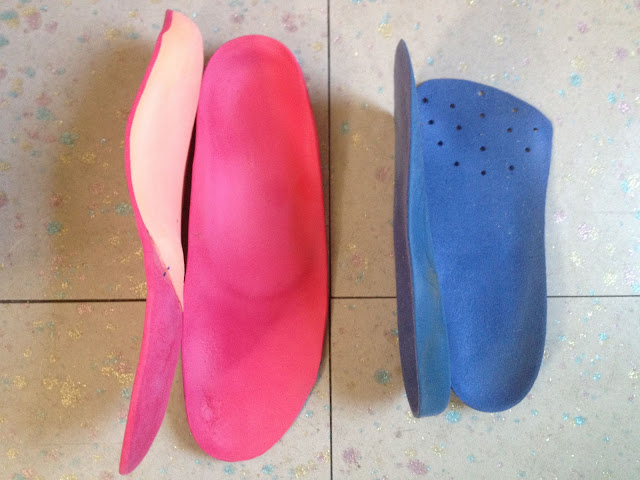Trigger pointing Dy's Head Pain
I got the opportunity to practise on Dy the other day. He complained of horrible pain all along the left side of his head, like it was 'inside' his head. He also suffered muscle twitching and pain when he tried to turn his head to the right. I immediately suspected trigger points somewhere in his neck muscles were causing 'referred pain' in his head.
Trigger points are apparently 'remarkably common' - perhaps contributing to up to 93% of pain seen in pain clinics (Gerwin 1995 in Davies' 2004 'The Trigger Point Therapy Workbook'). Dy is a prime candidate for trigger points because he is tense and on guard all the time. I mean like, all the time (more causes of trigger point given later). I flipped through the book and found under the chapter 'Head and Neck Pain', the diagram that showed a referred pain pattern that looked like Dy's. Notice that the central trigger points (those black dots) are located right in the 'belly' of the muscle (the biggest part of the muscle).
As I felt carefully along the muscles of Dy's neck with my fingers, I found one nodule about the size of a jellybean, that was very tender and painful for Dy when I pressed on it. This was nodule exactly where the diagram pictured a trigger point might be found. So I firmly rubbed on it a few times with my thumb - sort of a smooth rolling motion. Dy said the pain went away! I told him to keep feeling at the back of his neck and rubbing it out every hour or two, just to make sure. It's been two days and so far so good! Sometimes it takes up to two weeks if the trigger points are really bad, but I guess in Dy's case, they weren't too bad.
 |
| (Credit: The Trigger Point Therapy Workbook) |
Trigger Pointing Spencer's Tennis Elbow
Spencer has the worst case of tennis or golfer's elbow ever. I tried trigger pointing it a few weeks ago, but it didn't seem to help. I am still learning after all, and sometimes I have trouble figuring out the diagrams in the Trigger Point Therapy Book.
Anyway, I had another good look at the book, practised locating the muscles and potential trigger points on my own arm.
Then I took another shot at Spencer's elbow.
Guess what? This time, I really did find the nodule - it was quite a large one - a grape-sized lump in the middle of his tricep, nearer his elbow. It was very painful for Spencer when I pressed on it. I firmly rubbed on it about 12 times. I also used my fingertips and thumbs to feel along the muscles around the elbow, trying to find any other trigger points. Didn't find any more though.
By the time I got done with that, Spencer had already passed out on the massage table. :p
When he awoke from the nap later, he said the pain had eased tremendously. I'm so pleased about that!
What Causes Trigger Points?
Okay before I wrap up this post, I'll briefly go over the main causes of trigger points so you can see if you're a candidate too:
- Abnormal bone structure such as a short leg, Morton's foot (the second toe longer than the big toe), can strain the muscles.
- Bad posture while sitting and standing (especially for long periods of time) can cause muscle tightness.
- Repetitive movement such as typing, forces the muscles of the shoulders, neck and back to be still while the muscles in the arms and hands strain.
- Stress and subconsciously holding the muscles tight will also strain the muscles.
- Health problems especially those involving chemical, nutritional, glandular imbalances/deficiencies (eg. hypothyroid, hypoglycemia, anemia, uricemia) can predispose you to trigger points too.
Next post, I'll delve into the physiology of a trigger point and how to trigger point the vastus medialis to help with ITB (iliotibial band) pain.
In the meantime, do keep your questions and comments coming. Do you think you suffer from trigger points? Any specific parts that you have bad pain? I love hearing from you!
xo Gracie
p.s. it would be GREAT if you could click on any ad here - my sponsors give me a few cents per click. Thanks for supporting my blog!




+copy.jpg)
.jpg)


